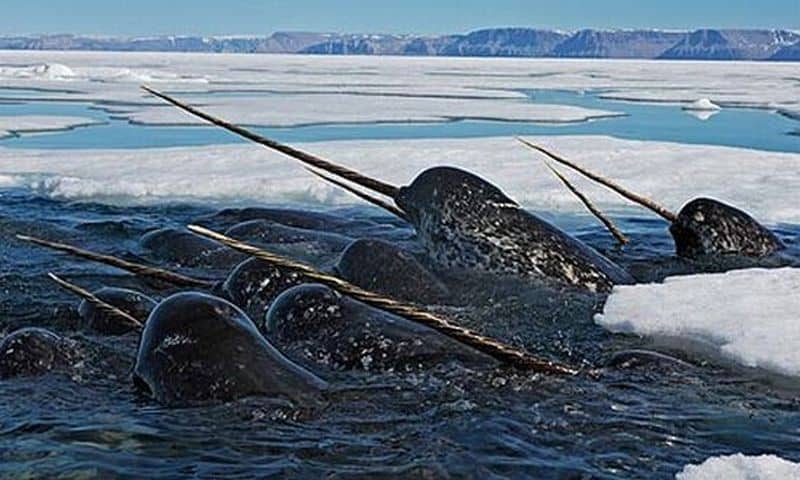The US Government is out to list the polar bear as a threatened species owing to global warming, but a recent study by scientist Kristin Laidre of the Polar Science Center (University of Washington) published in the Ecological Applications reveals that a lesser known arctic whale with a spiral tusk called the narwhal is highly vulnerable to extinction owing to the same environmental phenomenon. Inflexibility to environmental fluctuations, high specificity in habitat and diet are being viewed as the casual factors.
The narwhal is very narrowly distributed unlike the other polar inhabitants like the polar bear, the Arctic whale, the bowhead and the beluga. It is found in a narrow strip between Baffin Island and Greenland. There are about 80,000 Narwhals in all and they strongly adhere to established migratory patterns. The narwhal is very sensitive to changes in the distribution of winter pack ice as they feed primarily during the cold and dark winters, even diving to about 15000 meters below sea level for its prey, the Green halibut. The narwhal is fastidious about its food preferences and does not eat anything and everything. Other than the Green halibut, it preys on cod or squid. During the summer months the narwhal rests in the north-east passage and westerly coast of Greenland.
Laidre voices his concern over the survival of the narwhal when the ice will lessen owing to global warming. As narwhals are highly habitat specific and loyally return to their habitats every year, the temperature and current fluctuations will adversely affect their prey and consequently them. Moreover, lesser ice will make the narwhal an easy target for killer whales. As for the polar bears, they pose a lesser threat to the narwhal as they hunt for it only in the vicinity of its breathing holes.
According to Inuit, there is a change in the distribution and condition of the narwhal while the Canadian Ice Service reports the incidence of Brucellosis, a condition indicating environmental stress in the narwhal. Recently, owing to the wintering grounds at Baffin Bay getting colder, the surface water that is available for the narwhal to breathe is getting frozen leading to unavailability of breathing water. In the cooling periods of 12th and 19th centuries, the narwhals were believed to have been dwelling farther south. It was last seen in 1588 in British waters.
Yet, a lot has to be learned about the narwhal and its habitats. They are basically remote, difficult to detect and monitor and hence, it is difficult to say if they will attract attention as victims of global warming more than the polar bear.
via: Guardian


